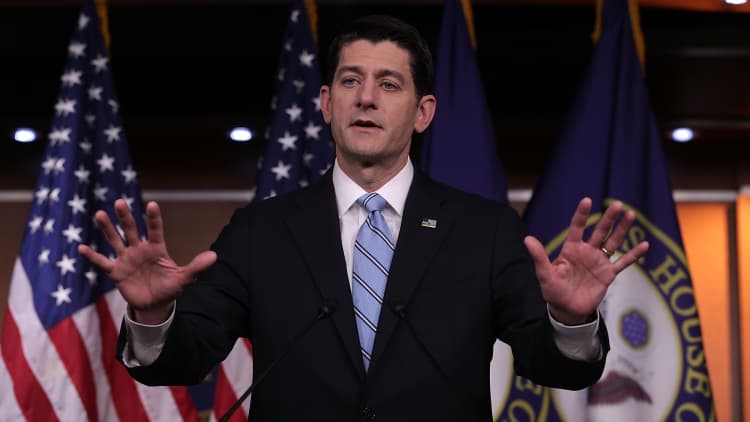
The Obama administration on Tuesday starkly warned Republicans against a "repeal-and-delay" strategy on Obamacare as it announced that more than 11.5 million Americans have signed up for health insurance coverage on government-run marketplaces this enrollment season — a slight increase from last year.
Administration officials, citing previous third-party analysis, said 30 million people could lose coverage and individual health plan prices could spike dramatically if Republicans voted to repeal key parts of Obamacare but delayed the repeal for several years to give them time to craft a replacement.
"It's important to remember that repeal-and-delay ultimately means gambling on millions of people's health care on the assumption Congress will pass a replacement plan," said Benjamin Wakana, spokesman for U.S. Health and Human Services Department Secretary Sylvia Burwell.
"The stakes are too high on moving forward with repeal and not knowing what comes next yet," Wakana said.
Wakana's warning came as Obamacare enrollment for 2017 headed into the home stretch, and as GOP leaders in Congress struggled over the question of whether to repeal major parts of the health-care reform law without a replacement plan in place, or repeal and replace at the same time.
It also came as the Council of Economic Advisers released a brief that concluded that big price hikes in Obamacare plans for 2017 appear to be "a one-time correction."
That brief also found that those premium increases are not substantially harming either enrollment in the individual insurance plan market, or that market's "risk pool," its mix of healthier and sicker customers whose premium payments and benefits usage offset one another.

The more than 11.5 million person tally is as of Dec. 24, according to data released Tuesday. That's 286,000 more than the number of signups during the same period the previous year.
"The good news is that nationwide plan selections for marketplace coverage are higher than they've ever been," said Christen Linke Young, principal deputy director of the Center for Consumer Information and Insurance Oversight at the federal Centers for Medicare and Medicaid Services.
Open enrollment in Obamacare plans continues through Jan. 31. Under Obamacare, most Americans must have some form of health coverage or pay a fine, which is the higher of $695 per adult or 2.5 percent of household income.
The largest share of customers came from HealthCare.gov, the federal Obamacare exchange that serves residents of 39 states. The remaining customers came from sign-ups on exchanges run by individual states and the District of Columbia.
The new tally included 8.9 million returning customers and 2.6 million new ones. A total of 81 percent of all customers who signed up for coverage in 2017 will receive subsidies, in the form of federal tax credits, that will lower their monthly premium payments. The average value of those subsidies is $386 per month for customers of HealthCare.gov.
Administration officials said the new tallies not only show that claims of the individual insurance market entering a "death spiral" are not true, but that the market is growing, despite criticism from Obamacare opponents.
"We're leaving in place a stable marketplace that's growing and poised for success," said Linke Young.
Aviva Aron-Dine, senior counselor to the secretary at HHS, said, "We can officially pronounce these death spiral claims are dead."
In addition to the more than 11.5 million covered via the Obamacare exchanges, 729,000 people were covered through Basic Health Programs in New York and Minnesota. Under the Affordable Care Act, states have the option of using such programs to offer affordable health coverage to low-income residents who would otherwise be eligible for coverage through an Obamacare exchange.
Also Tuesday, S&P Global Ratings issued a report that its outlook for the American not-for-profit health sector "remains stable ... in 2017 despite a sharp rise in legislative risk."
"Our 2015 financial medians and 2016 ratings and outlook change data continue to support our outlook for sector stability through 2017," the report said.
But, said S&P Global Ratings credit analyst Kevin Holloran. "we see a growing potential for credit quality deterioration based on the latest results from some providers, and the possibility the outlook could turn negative after the new administration and Congress are sworn in, given their intention to drastically alter the ACA and many long-term legislative tenets of the overall health care delivery system."


